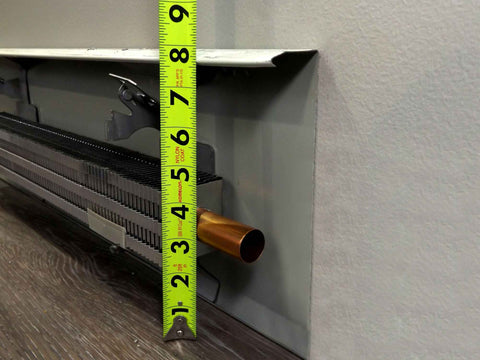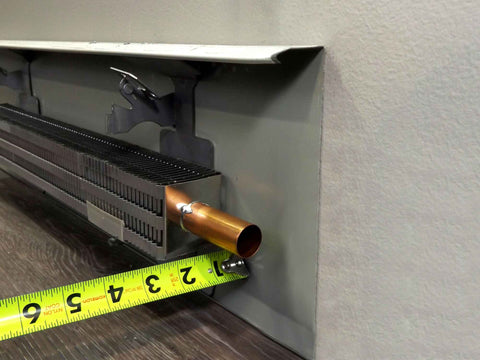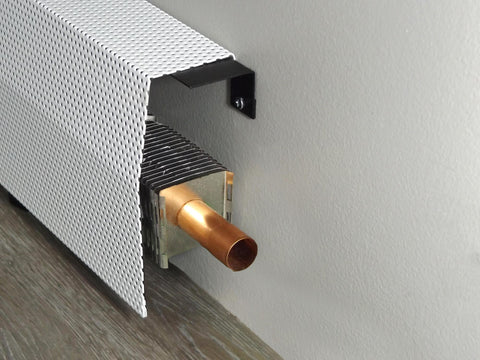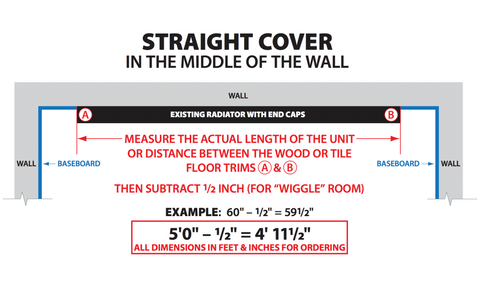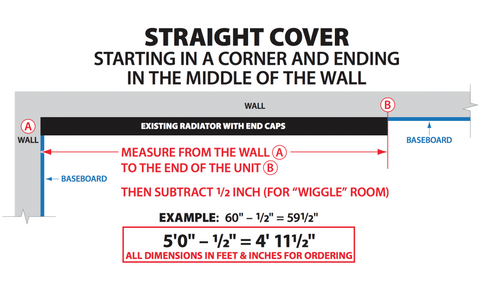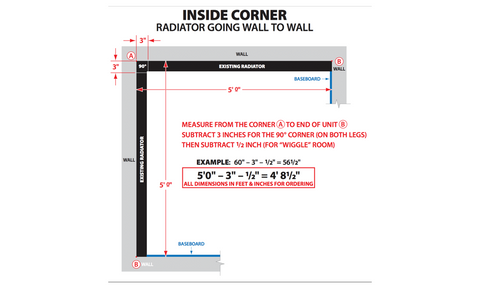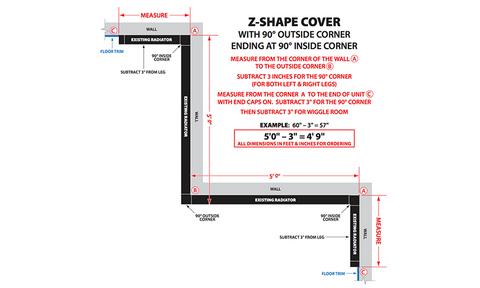If you’ve encountered baseboard heaters while researching home heating options, you’ve probably seen some mixed opinions. On one side, people praise these heaters for their simplicity, reliability, and energy efficiency. Conversely, critics often dismiss them as outdated or less effective than modern heating systems. With so many opinions floating around, it can be difficult to separate fact from fiction.
Are baseboard heaters truly outdated, or do they still hold value as a practical heating solution? The truth lies in the details, and understanding those details is key to making an informed choice for your home.
To help you navigate this debate, we’re here to tackle the most common myths about baseboard heater systems and uncover the facts. Whether considering them as your primary heating source or as a supplement to an existing system, understanding their design and functionality can help you decide if these heaters are the right fit for your home.
What Are Baseboard Heaters?
Baseboard heaters are a type of heating system typically installed along the bottom of walls at the “baseboard” level (hence the name). They can run on electricity or hot water, depending on the model.
Electric baseboard heaters use electricity to heat metal elements within the unit. The heat generated rises naturally (through convection) into the room without the use of a fan, making these heaters efficient at distributing heat.
Hydronic baseboard heaters use hot water or oil that flows through pipes or radiators within the baseboard to provide warmth. This style retains heat longer, warming a room even after the heater turns off.
Baseboard heaters are often selected for their unobtrusive design, straightforward installation, and low-maintenance operation. But despite their benefits, many myths surround their efficiency, safety, and practicality.
Benefits of Baseboard Heater Systems
Before we dig into the myths, it’s important to know why baseboard heaters remain a staple in many homes today. Here are just a few benefits they offer:
-
• Quiet operation: Baseboard heaters don’t rely on fans, unlike forced-air systems, so they operate silently. This quiet operation makes them perfect for bedrooms, home offices, or other spaces where peace and quiet are essential.
-
• Zoned heating: Baseboard heaters can be controlled individually, letting you heat specific rooms rather than the entire home. This personalized approach saves energy and money.
-
• Low maintenance: Baseboard heaters don’t require ductwork, filters, or annual tune-ups. Occasional cleaning and a yearly inspection are generally all they need.
-
• Simple installation: These systems are relatively easy and quick to install, especially in homes without ductwork or radiator piping.
-
• Steady, comfortable heat: Baseboard heaters offer even and consistent warmth. Without any blowing air, you’ll avoid drafts or sudden temperature fluctuations.
Common Myths About Baseboard Heaters
Even with their benefits, baseboard heaters are often misunderstood. Let’s debunk myths about these systems and the truth behind them:
1. Baseboard Heaters Are Inefficient
Some people assume baseboard heaters are energy hogs that drive up electricity bills, but this isn’t always the case. Modern baseboard heaters are designed with efficiency in mind, especially when combined with proper insulation and effective thermostatic controls. Factors like sealing drafts, insulating windows, and programming thermostats optimize the heater’s performance.
2. They’re Outdated Technology
While it’s true that baseboard heaters have been around for decades, that doesn’t mean they’re obsolete. Innovations like smart thermostats, energy-efficient designs, and better insulation for hydronic models have brought them into the modern age. For homes that can’t accommodate ductwork, baseboard heaters are a viable, practical option.
3. Baseboard Heaters Are Unsafe
Many homeowners worry about safety, so some might avoid baseboard heaters out of concerns of fire hazards or overheating. However, baseboard heaters have built-in safety features like automatic shutoff mechanisms to prevent overheating. When properly installed and maintained, these heaters are perfectly safe for residential use. Keeping the area around the heater clear of furniture or flammable items is key to minimizing potential risks.
4. They Cause Dry Indoor Air
Unlike forced-air systems, baseboard heaters don’t circulate air throughout a space. This means these heaters don’t strip moisture from the air the way some HVAC systems can. Instead, they provide soft, even heat without worsening dry indoor environments—a win for those sensitive to dry winter air.
5. They’re Too Noisy
There’s a misconception that baseboard heaters are noisy, but this tends to be based on outdated models or improper maintenance. Newer systems operate silently, without clanging, whooshing, or humming to disturb your day. Hydronic baseboards are especially quiet, as water flows gently through the pipes to distribute heat.
6. They Are Difficult To Control
Modern baseboard heaters often feature advanced thermostat systems, including programmable and smart controls. This means you can easily adjust the temperature in individual rooms and even program heating schedules to match your lifestyle. Far from being difficult to manage, these heaters offer precision and convenience.
7. They’re Only Useful for Small Spaces
While baseboard heaters are commonly found in small apartments and bedrooms, they’re not limited to compact spaces. When correctly sized and installed, they can heat larger areas or entire homes, especially when supplemented with good insulation.
8. Baseboard Heaters Are Cost-Prohibitive
The operational costs of baseboard heaters may indeed be slightly higher than those of centralized systems, especially in poorly insulated homes. However, their lower installation costs and minimal maintenance requirements make them affordable in most situations, like smaller homes, vacation properties, or rooms where supplemental heating is needed.
9. They Require Constant Cleaning
Do baseboard heaters collect dust? Yes. But constant cleaning? Hardly. Wiping down the units a few times a year and vacuuming the surrounding area is typically enough to keep them in top shape. Not to mention, baseboard heater covers like those from EZ Snap Covers can make maintenance a breeze.
10. They Don’t Work Well in Colder Climates
Some believe baseboard heaters can’t handle icy winter days, but that depends on how they’re used. Baseboard heaters can keep your home warm, even in cold climates, when matched with proper insulation. Hydronic heaters, in particular, excel at retaining heat over longer periods.
Should You Consider Baseboard Heaters?
Baseboard heaters have stood the test of time for good reason. They can be a reliable, efficient, and quiet heating solution when paired with modern technology, proper sizing, and thoughtful home insulation. By debunking the common myths about baseboard heaters, you can see why these systems remain a valuable option for many homeowners.
If you’re ready to maximize the efficiency and aesthetics of your baseboard heaters, check out our baseboard radiator covers at EZ Snap Covers. Designed for style and functionality, our covers create a cleaner look while improving airflow and performance. Start your heating upgrade today!
